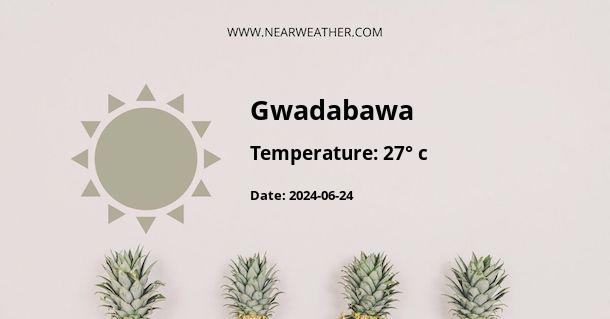Gwadabawa, Nigeria: Climate and Weather
Gwadabawa is a town located in Sokoto State, Nigeria. It is situated in the northwestern region of the country and has a population of approximately 30,000 people. The town experiences a semi-arid climate, characterized by hot, dry summers and mild winters. In this article, we will explore the climate and weather patterns in Gwadabawa throughout the year.
Temperature
The temperature in Gwadabawa varies significantly throughout the year. The hottest months are typically March and April, with average high temperatures exceeding 40°C (104°F). During this time, it is essential for residents and visitors to take precautions against extreme heat, such as staying hydrated and avoiding prolonged exposure to the sun.
During the winter months of December and January, Gwadabawa experiences milder temperatures, with average highs ranging from 26°C to 30°C (79°F to 86°F). Nights can be cooler, with temperatures dropping to around 12°C to 16°C (54°F to 61°F). It is advisable to pack a light jacket or sweater for the evenings during this time of the year.
Rainfall
Gwadabawa has a distinct wet and dry season. The wet season typically begins in May and lasts until September, with July and August being the peak months for rainfall. During this period, the town receives an average of 400 to 600 millimeters (15.7 to 23.6 inches) of rainfall. The rainy season brings relief from the scorching heat and helps to sustain agriculture in the region.
The dry season, on the other hand, extends from October to April. During this time, Gwadabawa experiences very little rainfall, with the months of December to February being particularly dry. The average annual precipitation in the town is around 800 to 900 millimeters (31.5 to 35.4 inches), making it a relatively arid region overall.
Wind Patterns
Gwadabawa is influenced by the Harmattan wind, which blows from the northeast between November and February. The Harmattan wind is characterized by dry and dusty conditions, often reducing visibility and causing respiratory issues. It is advisable to take precautions, such as wearing protective clothing and using moisturizers, during this period.
Climate Change
Like many other regions around the world, Gwadabawa is also experiencing the effects of climate change. The changing climate patterns have led to increased temperatures and irregular rainfall patterns, impacting the agricultural sector and livelihoods of the local population.
Efforts are being made to mitigate the effects of climate change in Gwadabawa. The government and local communities are implementing sustainable agricultural practices, water conservation measures, and raising awareness about the importance of climate resilience.
Conclusion
Gwadabawa, Nigeria, experiences a semi-arid climate with hot, dry summers and mild winters. The town has distinct wet and dry seasons, with the wet season lasting from May to September and the dry season from October to April. The temperature in Gwadabawa can reach extreme highs during the summer months, and it is crucial to take precautions to prevent heat-related illnesses. The town also experiences the Harmattan wind between November and February, which brings dry and dusty conditions. Climate change is affecting Gwadabawa, leading to increased temperatures and irregular rainfall patterns. Sustainable practices and awareness campaigns are being implemented to address these challenges and build climate resilience in the region.
A - Gwadabawa's Latitude is 13.356120 & Longitude is 5.236640.
A - Weather in Gwadabawa is 24° today.
A - Climate Conditions in Gwadabawa shows broken clouds today.
A - Humidity in Gwadabawa is 17% today.
A - Wind speed in Gwadabawa is 18.07 km/h, flowing at 48° wind direction. today.
